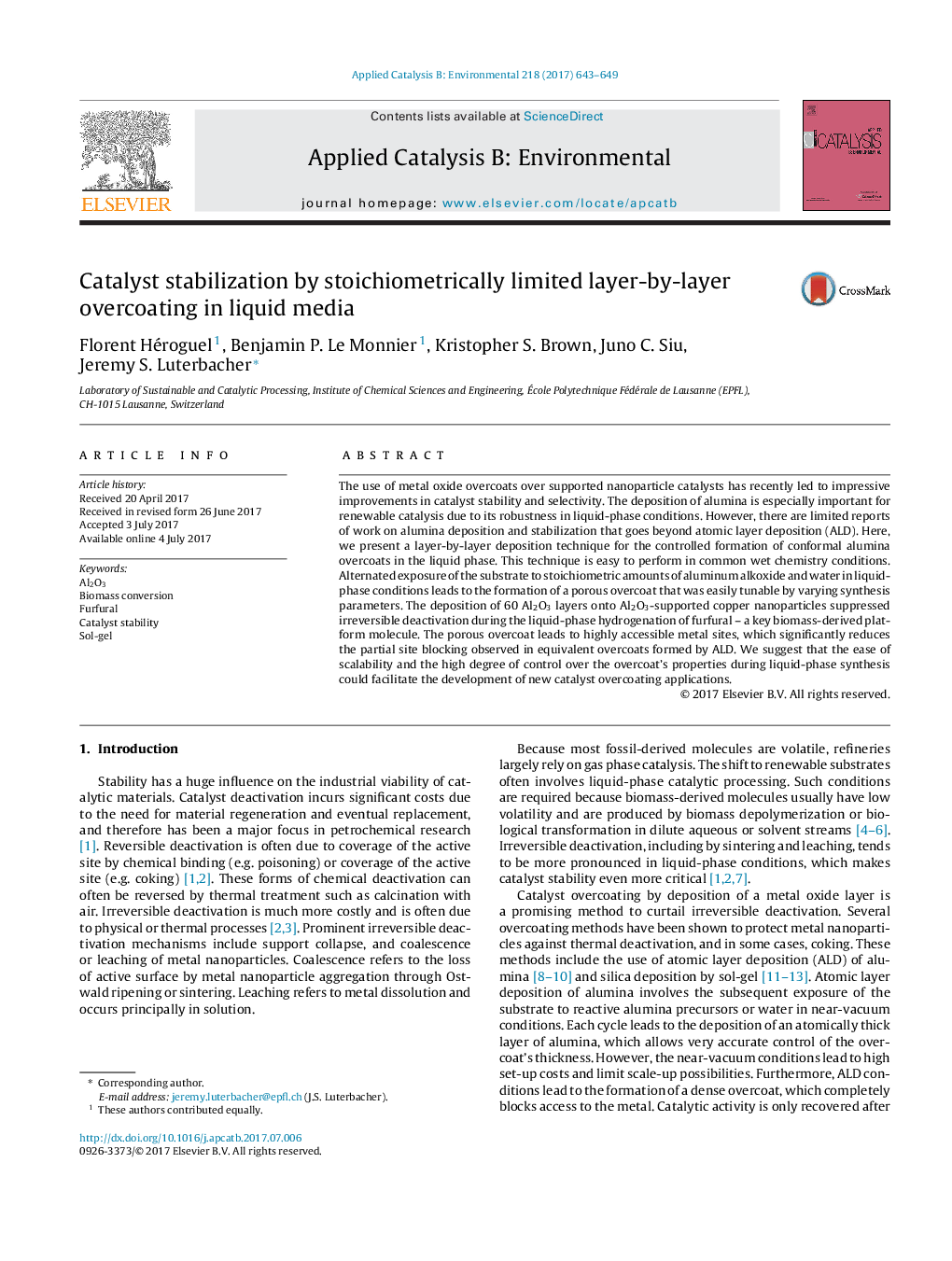| Article ID | Journal | Published Year | Pages | File Type |
|---|---|---|---|---|
| 6453816 | Applied Catalysis B: Environmental | 2017 | 7 Pages |
â¢Catalyst overcoating with alumina was performed entirely in liquid phase conditions.â¢Overcoat stabilized Cu/Al2O3 during liquid-phase hydrogenation of furfural.â¢Unlike in gas phase methods, the overcoat maintained high accessibility to the metal.â¢The overcoat's nano-architecture is tunable by varying synthesis parameters.
The use of metal oxide overcoats over supported nanoparticle catalysts has recently led to impressive improvements in catalyst stability and selectivity. The deposition of alumina is especially important for renewable catalysis due to its robustness in liquid-phase conditions. However, there are limited reports of work on alumina deposition and stabilization that goes beyond atomic layer deposition (ALD). Here, we present a layer-by-layer deposition technique for the controlled formation of conformal alumina overcoats in the liquid phase. This technique is easy to perform in common wet chemistry conditions. Alternated exposure of the substrate to stoichiometric amounts of aluminum alkoxide and water in liquid-phase conditions leads to the formation of a porous overcoat that was easily tunable by varying synthesis parameters. The deposition of 60 Al2O3 layers onto Al2O3-supported copper nanoparticles suppressed irreversible deactivation during the liquid-phase hydrogenation of furfural - a key biomass-derived platform molecule. The porous overcoat leads to highly accessible metal sites, which significantly reduces the partial site blocking observed in equivalent overcoats formed by ALD. We suggest that the ease of scalability and the high degree of control over the overcoat's properties during liquid-phase synthesis could facilitate the development of new catalyst overcoating applications.
Graphical abstractDownload high-res image (128KB)Download full-size image
